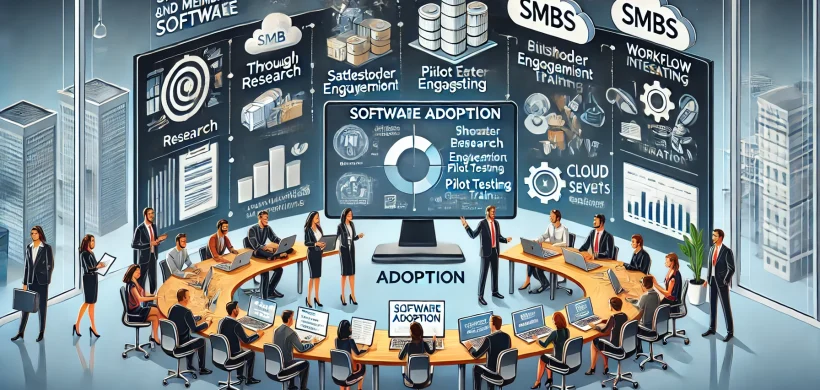Creating an effective support ticket is essential for resolving issues quickly and efficiently when using SaaS (Software as a Service) products. A well-written ticket provides the support team with all the necessary details to understand and address your problem promptly. Here are some key tips to help you craft an effective support ticket. 1. Craft...
As local governments increasingly seek to enhance efficiency and reduce costs, opportunities for small companies offering electronic monitoring and private probation services have surged. These sectors present significant growth potential, especially for companies capable of delivering innovative, cost-effective, and reliable solutions. To capitalize on these opportunities, small businesses must adopt strategic approaches tailored to the...
In today’s fast-paced business environment, adopting new operations software is a significant move that can enhance efficiency, improve productivity, and give small companies a competitive edge. However, the process of integrating new software into existing operations can be daunting. This article outlines best practices to ensure a smooth transition and successful adoption of new operations...
We’ve all been there: clinging to a comfortable routine, resisting new ideas, and muttering, “If it ain’t broke, don’t fix it.” While this adage holds some merit, in the ever-evolving world of business, clinging to outdated practices can be the difference between thriving and fading into obscurity. Today, let’s talk about the hidden costs of...
In recent years, alcohol monitoring technology has become an invaluable tool in both healthcare and legal systems. Devices designed for alcohol monitoring have evolved significantly, providing accurate, real-time data on an individual’s alcohol consumption. This blog post aims to delve into the technical aspects of how these devices function, their applications, and the science that...
In the realm of electronics and digital technology, GPS monitoring stands as a testament to how far we’ve come in terms of precision, reliability, and application diversity. Originally developed for military use, Global Positioning System (GPS) technology has seamlessly integrated into civilian life, proving indispensable in navigation, tracking, and even in the realm of criminal...
In Canada, recent trends in criminal justice have seen a notable shift towards the use of electronic monitoring and other community corrections policies as alternatives to traditional incarceration. Electronic monitoring, commonly known as ankle bracelets or GPS tracking devices, has emerged as a widely used tool in the supervision of offenders, allowing authorities to monitor...
Incarceration rates around the world have been subject to scrutiny and analysis due to their profound social, economic, and political implications. Understanding international trends in incarceration is crucial for policymakers, scholars, and advocates striving for a fair and effective criminal justice system. Examining various global perspectives provides valuable insights into the diverse approaches countries take...
The United States, known for having one of the highest incarceration rates globally, is witnessing a significant shift in its criminal justice system. The catalyst for this change? Electronic monitoring (EM). This technology, which includes devices like ankle monitors, offers an alternative to traditional incarceration, potentially transforming how America deals with offenders. The Burden of...
Introduction: In recent years, a wave of films and television shows has explored the challenges faced by ex-felons attempting to reintegrate into society after serving their sentences. These narratives shed light on the complexities of reentry, offering viewers a glimpse into the struggles and triumphs of individuals navigating life post-incarceration. Accurate Depictions: Several films and...










